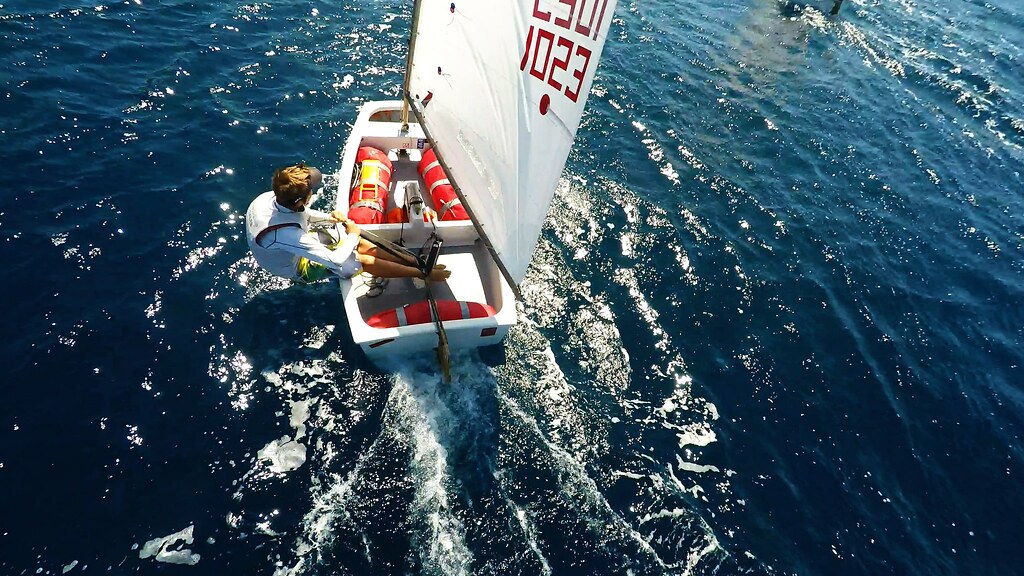How To Sail Single Handed
Sailing your boat single-handed has many attractions. Without the help of a crew, you are on your own to test your sailing ability. You have to take full responsibility for sailing properly, and your success is down to you alone. Many people choose the sport of single-handed sailing as it is often cheaper to buy a one-man boat, and it is also less expensive to maintain due to them being smaller, and the controls are much simpler. Many classes of sailboat races are restricted to one man boats. You can usually fit them to the top of your car too.
Single-Handed Sailing Boats
There are a variety of single-handed boats from the very small, designed as children’s dinghies such as the Optimist right up to the Finn an Olympic class boat. Most come with a cat rigged, single sail set from a mast nearer to the bow. For a highly effective sail shape, some single-handers have an unstayed mast that is allowed to bend.
Each single-handed boat design has its own handling characteristics and peculiarities that place particular demands on its helmsman, so it is difficult to generalize. A large number of one-man boats are very sensitive to changes in the way the crew weight is balanced, and you must always be aware of how any movements you make may affect the boat. It is possible you may have to continually adjust the rig while sailing as there is only one sail, and it should be tuned very accurately.
Laser Sailboats For Single-Handed Sailing
We will use the Laser for our example as it is one of the most popular single-handed boats, and it has an unstayed mast that is cat-rigged and a loose-footed sail.
On a Laser, as the wind gets stronger, the clew outhaul adjustment is of particular importance, as the outhaul should be pulled out. Sailing upwind in a single-hander with an unstayed mast requires the effect of mast bend and the weight of the crew to be carefully balanced to compensate for the heeling force. When reaching in a medium breeze the single-handers will usually compare favourably with two-man boats, especially in waves, as they will plain almost continuously.

They, like all high-performance boats, are usually easier to control on a reach. However, they can be difficult to handle on downwind courses as they handle differently. Due there being only one sail, the boat has a tendency to turn windward. This can be overcome if the boat is heeled to windward. When there are strong winds, the airflow can be reversed by sheeting the mainsail over the sail to provide a heeling force.
Tacking Single Handed
It is very important when tacking for you to time your move across the boat very carefully as single-handed boats are sensitive to wind shifts and changes in the weight distribution. You should cross the board smoothly and rapidly and sit out on the new side immediately. Keep the boat upright throughout the turn.
As the helmsman pushes the tiller away to start the tack, the boat should be sailing upright.
The helmsman eases the mainsheet and starts to cross as the boom nears the center of the boat.
The helmsman rotates the extension and begins to center the tiller, keeping hold of the mainsheet.
Changing hands on the tiller and mainsail, the helmsman sits down on the new side.
The helmsman trims the mainsail and balances the board for the new tack.
Jibing Single Handed
Your boat needs to be moving as fast as possible in preparation for a jibe. The centerboard (daggerboard) should be a third to halfway down. The boat should be heeled to windward or kept upright throughout the jibe. It is a good idea to pull in some mainsheets to help the boom to cross smoothly and prevent it catching on the transom.
The Helmsman:
- Changes the tiller extension to the new side when sailing on the run.
- Changes hands on the tiller extension after cleating the mainsheet.
- Heels the boat to windward, uncleats the mainsheet, and moves the tiller.
- Moves to the new side and centers the tiller as the boom moves across.
- To keep the boat upright, the helmsman sits on the new side with the tiller towards him.
Rigging The Boat Single Handed
The sail is attached by inserting the mast into a sleeve in the luff on a Laser. The mast cannot be stepped until the sail has been fitted. The Cunningham control holds the mast in position. It is easier to have help when rigging a Laser even though the parts of the boat are very light.
After joining the two mast sections, the sail is fitted onto the mast.
While the sail is fitted onto the gooseneck, the mast is held still.
The clew is lashed to the boom, and the outhaul tensioned and cleated on the boom.
The Cunningham control is taken through the hole, round the boom before being cleated on deck.
Attach the boom vang tackle so it can be adjusted from below.
